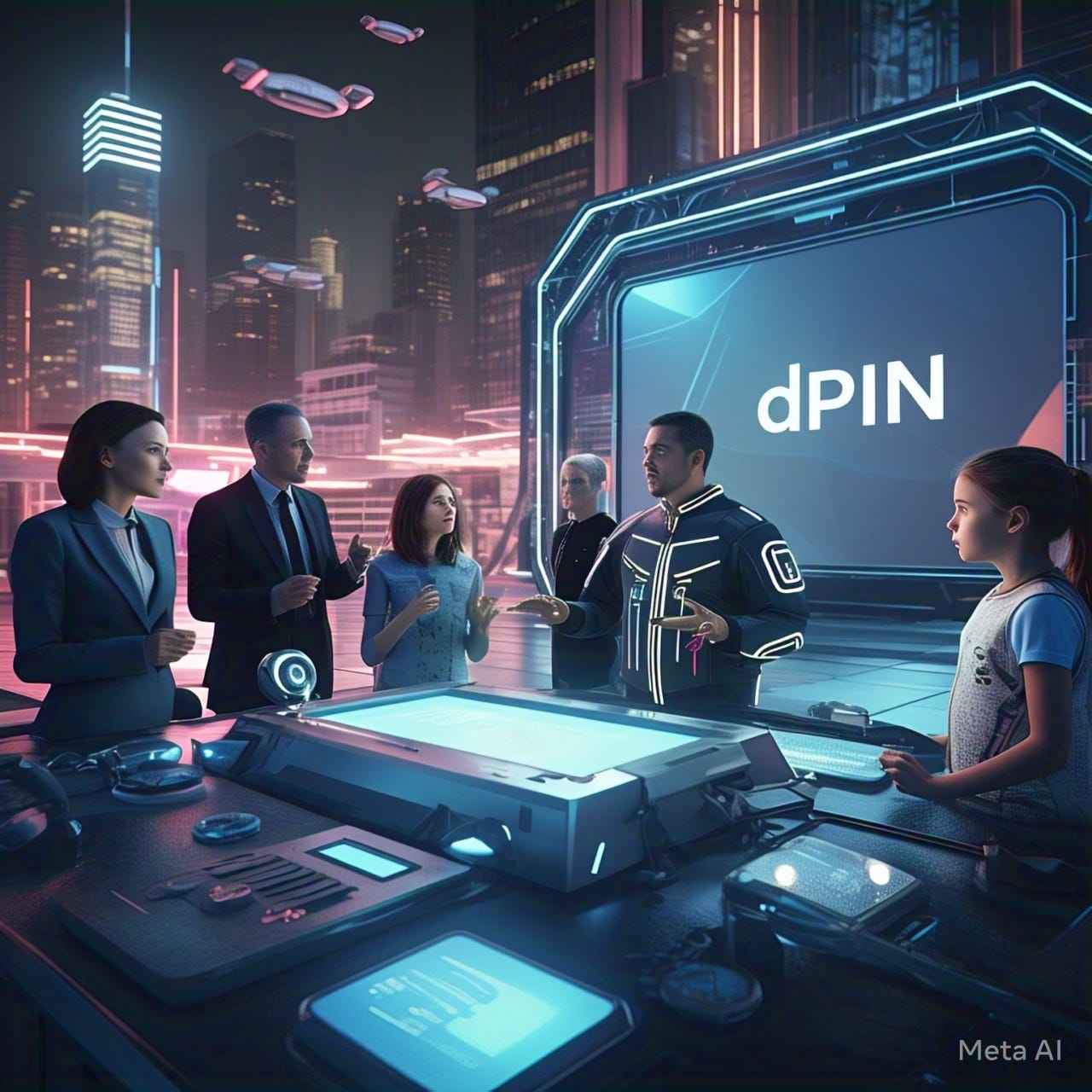dPIN: The Future of Decentralized Connectivity – Opportunities & Challenges
Dear Crypto Enthusiasts,
Welcome to this edition of Crypto Community News! Today, we’re diving into a revolutionary concept that is poised to reshape the internet as we know it—Decentralized Physical Infrastructure Networks (dPINs). With Web3 ushering in a new era of digital ownership and control, dPINs present an exciting opportunity to redefine connectivity by making it decentralized, user-driven, and censorship-resistant
.
Let’s explore what dPINs are, their potential applications, and the opportunities and challenges that come with them!
What is dPIN?
dPIN stands for Decentralized Physical Infrastructure Networks, an innovative approach to building, maintaining, and utilizing physical infrastructure through blockchain technology. Instead of centralized corporations controlling internet connectivity, power grids, and data storage, dPINs distribute these responsibilities across a network of individuals and entities, ensuring more resilience, privacy, and accessibility.
Key Features of dPINs:
Decentralized Ownership – Users collectively own and manage infrastructure.
Incentive-Driven Participation – Contributors earn rewards for maintaining and expanding the network.
Blockchain-Based Coordination – Smart contracts enable secure and transparent transactions.
Resilience and Redundancy – More resistant to failures and censorship.
This decentralized model has already seen adoption in several industries, from wireless networks to distributed storage solutions and renewable energy grids.
Opportunities in dPINs
dPINs unlock game-changing possibilities across multiple sectors, fostering community-driven innovation and economic empowerment. Here’s how:
1. Decentralized Wireless Networks
Traditional telecom companies monopolize internet access, but dPIN projects like Helium (HNT) are proving that decentralized connectivity is possible. Helium enables users to set up hotspots and earn tokens while providing long-range, low-power wireless connectivity for IoT devices.
✔ Opportunities:
Democratized access to the internet, especially in underserved regions.
Community-powered 5G and IoT networks.
Lower costs due to reduced dependence on corporate infrastructure.
2. Decentralized Cloud Storage
Companies like Google Drive and Dropbox control centralized cloud storage, but blockchain-based solutions like Filecoin (FIL) and Storj (STORJ) offer an alternative. These networks allow users to rent out unused storage in exchange for crypto rewards, creating a secure, censorship-resistant system.
✔ Opportunities:
Greater privacy and data sovereignty.
No reliance on a single corporate entity.
Cost-effective and scalable cloud storage.
3. Decentralized Energy Grids
Blockchain-based solutions like Power Ledger (POWR) and Grid+ allow individuals to trade renewable energy directly with peers, reducing reliance on centralized utilities.
✔ Opportunities:
Lower energy costs for consumers.
Increased use of renewable energy.
More resilient energy grids with decentralized control.
4. Decentralized Mapping & Navigation
Services like Google Maps are centralized, collecting vast amounts of user data. dPINs like Hivemapper (HONEY) offer decentralized mapping solutions where users contribute GPS data via dashcams and earn tokens for their efforts.
✔ Opportunities:
Censorship-resistant mapping.
Crowdsourced, constantly updated geographic data.
User incentives for contributing accurate map data.
5. Decentralized AI Compute Networks
With AI booming, decentralized GPU-sharing networks like Render (RNDR) and Akash Network (AKT) allow individuals and businesses to rent out spare GPU power for AI model training and rendering services.
✔ Opportunities:
Lower costs for AI developers.
Greater accessibility to compute power.
Reduction in idle hardware waste.
Challenges Facing dPINs
Despite the immense potential, dPINs face significant hurdles that need to be addressed for widespread adoption.
1. Adoption & Network Effects
Without enough participants, decentralized networks struggle to gain sufficient coverage and liquidity.
Solution: Incentivize early adopters through rewarding mechanisms.
2. Security & Reliability
dPINs must ensure robust security against cyber threats while maintaining service reliability.
Solution: Continuous upgrades, bug bounties, and cryptographic security measures.
3. Regulation & Compliance
Governments may impose strict regulations on decentralized networks, especially in telecom and finance.
Solution: Projects must engage with regulators while maintaining decentralization principles.
4. Initial Infrastructure Costs
Setting up decentralized infrastructure requires initial capital for hardware, connectivity, and technical expertise.
Solution: Crowdfunding models and incentives for early supporters.
5. Scalability & Governance
dPINs must balance decentralization with efficiency, avoiding governance deadlocks.
Solution: Implement DAO governance models where stakeholders vote on network changes.
How to Get Involved in dPINs
If you’re excited about the future of decentralized connectivity, here’s how you can participate:
✔ Run a dPIN Node or Hotspot – Contribute to Helium, Hivemapper, or Render Network by setting up hardware. ✔ Invest in dPIN Tokens – Research and hold tokens associated with dPIN projects. ✔ Join a dPIN DAO – Help govern decentralized infrastructure networks through DAOs. ✔ Spread Awareness – Educate others about the benefits of decentralized connectivity.
Final Thoughts
dPINs represent a major shift in how we think about connectivity, infrastructure, and digital services. By leveraging blockchain technology, these decentralized networks can democratize access to wireless internet, cloud storage, mapping, and AI compute power, creating a fairer, more efficient, and censorship-resistant digital ecosystem.
While challenges remain, continuous innovation and community participation will determine how successful dPINs become. As the Web3 revolution unfolds, dPINs could disrupt traditional monopolies and redefine global infrastructure for the better.
We’re at the forefront of a new era in connectivity—will you be part of it?
Best Regards,
Crypto Community News
Disclaimer: This newsletter is for informational purposes only and does not constitute financial advice. Always conduct your own research before making investment decisions.



